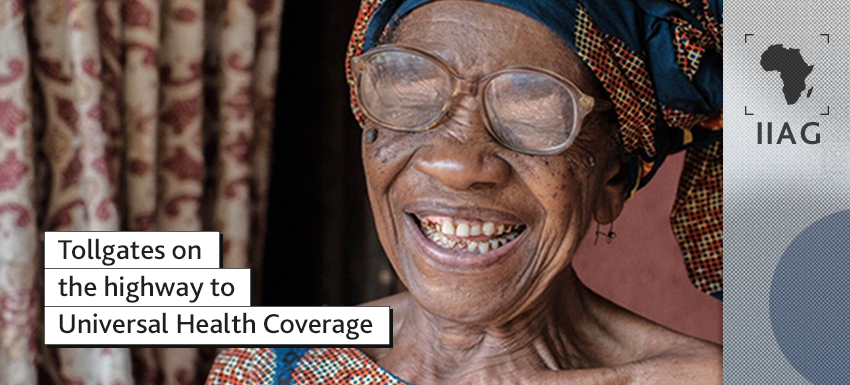In about ten years from now, the state of health across African populations will determine whether we have achieved the Sustainable Development Goals (SDGs). As a strategy for meeting them, leaders, on behalf of their citizens, have committed to achieving Universal Health Coverage (UHC) by 2030. In Africa, this has deep implications for achieving Agenda 2063 too as 2030 will be a pit stop on the journey to prosperity for all.
The purpose of the UHC investment is to ensure that every child born will be healthy enough to contribute to the socio-economic transformation of the African continent. And a child’s health is intrinsically related to maternal health. One could imagine UHC as a highway where the system is designed for no pile ups and affordable tollgates. Health, a key component of human development, is the most improved sub-category of the Ibrahim Index of African Governance (IIAG) which measures and monitors governance performance in African countries.
Right now, the highway has tollgates, and many are challenged by affordability, so they stay on dirt roads and secondary roads where access to affordable quality healthcare remains a barrier. For the few able to afford to pay, they can reach their destination and maintain their health goals. Even their lifestyle which may bring them a non-communicable disease (NCD) along the way, will not limit their ability to access quality care.
UHC can take away the tolls by first focussing on preventable and curable diseases.
But at the same time, we continue to harness system failures such as chronic malnutrition, fistula and trachoma. Chronic malnutrition, for example, affects child development. Fistula limits a women’s ability to achieve her full potential in society. And trachoma is a preventable disease responsible for blindness or visual impairment. With data visualisation techniques, it is possible to identify clusters of these health challenges as they are indicators of interconnected issues for families affected by them.
We know that Africa’s economic transformation requires us to ensure that women lead in different sectors of the economy. Yet, millions of women cannot contribute their fair share to the collective effort of attaining prosperity by 2063. According to the World Health Organization (WHO), over 2 million young women in sub-Saharan Africa and Asia live with untreated obstetric fistula, a preventable and curable ailment which makes them pariah of a system that has all it takes to treat them.
Maternal and child health are central to achieving UHC with a purpose; African structural transformation. As highlighted in the IIAG UHC analysis, there is growing dissatisfaction with how African governments are handling improving basic health services. This means we may be in a situation that even tax-paid healthcare delivered at limited cost to the end user is not efficient, and this might be strongly connected to outdated infrastructure and availability of basic amenities, out of pocket payments and catastrophic expenditures among other issues.
In limiting the drain from preventable and curable diseases on countries’ limited resources, we can ensure that human capabilities and financial resources address new and emerging threats related to climate change. Innovation and big data allow us better visualisations of clusters of diseases and the linkages that they have with socio-economic indicators. Most of us have experienced a system failure on the highway. It is preventable and save lives. The same applies to preventable and curable diseases. Yet many of these are still neglected even though scientific evidence demonstrates that we can eradicate them for good.
Trachoma or river blindness belongs to a group of neglected tropical diseases (NTDs) blinding 26 million people worldwide with a significant number in Africa. NTDs affect 1.6 billion people worldwide. These are treatable and preventable diseases which place a heavy burden on countries wanting to be on the highway to UHC. The real challenge with NTDs is that we know that we can eliminate them. On average it costs less than US$ 0.50c per person per year. The infrastructure and the structural transformation of Africa’s rural economies can help accelerate elimination of NTDs.
The political determination at the start of the SDGs is in action. While we want an acceleration through UHC, we must acknowledge progress as Health is the most improved sub-category over the IIAG time-series (2008-2017), with an African average score of 67.8 (out of 100.0), having increased by +7.6 points in that time. Moreover, 47 countries, home to approximately 93% of Africa’s citizens, have managed to improve their health results. As highlighted in the IIAG, improvements in Antiretroviral Treatment (ART) Provision, Absence of Child Mortality and Absence of Communicable Diseases are driving this progress.
It is the political determination to make dirt roads climate resilient, secondary roads free from congestion and removing preventable and curable diseases from the highway that will carry us through the hard work of structural economic transformation via the UHC highway. It is possible and it requires Africans with disposable income to increase their generosity for the tollgates to UHC to be removed for all.

